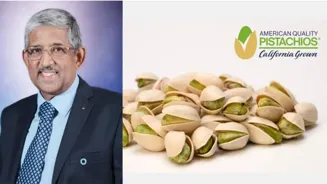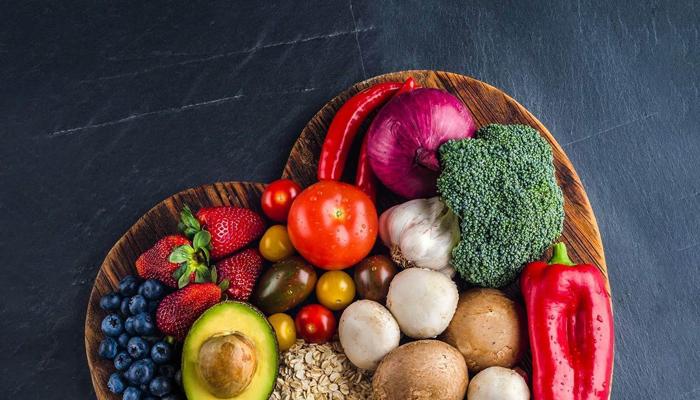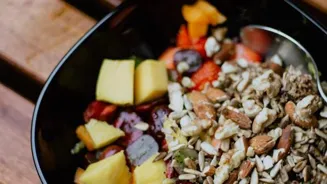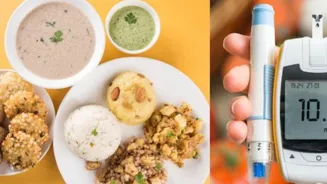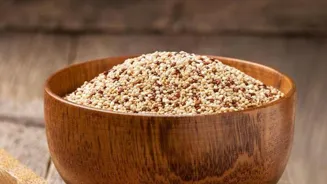India is facing a rapid rise in lifestyle diseases like type 2 diabetes, insulin resistance, and sudden cardiac arrests—even among young people. In this
context, food choices play a crucial role in prevention. Dr. V. Mohan, one of India’s foremost diabetologists, shares insights from his recent research on pistachios, in collaboration with the American Pistachio Growers (APG). His work highlights how simple dietary additions can lead to significant health improvements.
A Research-Driven Approach to Nuts and Diabetes
At MDRF, we are not just a diabetes hospital; we are a recognized research institution engaged in large-scale epidemiological and clinical studies. Our landmark ICMR-INDIAB study remains India’s largest diabetes research project.
We also have a dedicated Food and Nutrition Research Department (FNDR) where we conduct trials to test glycemic responses to various foods, especially when brands claim “low glycemic index” properties.
Our research on nuts has been extensive. We’ve studied cashews, almonds, and now pistachios—thanks to our collaboration with APG. It’s important to note that while the American Pistachio Growers funded this study, they had no role in the design, execution, or analysis of the research.
Pistachios: More Than Just a Snack
The average Indian diet is disproportionately high in carbohydrates—about 70-75% of daily calories—while protein intake languishes around 8%. Ideally, carbohydrates should make up 40-50% of daily calories, proteins should account for 20%, and the rest should come from healthy fats.
This carb-heavy diet not only leads to poor muscle mass but also increases the risk of insulin resistance, setting the stage for type 2 diabetes. Additionally, many Indians consume excessive amounts of saturated fats like butter and ghee, instead of healthier fats such as monounsaturated fatty acids (MUFAs).
Pistachios offer a natural solution. They are rich in MUFAs, plant protein, and fiber—nutrients that are currently missing in the typical Indian diet. By including nuts like pistachios, we can create a more balanced plate that supports metabolic health.
How Pistachios Compare to Traditional Indian Snacks
Let’s compare pistachios to common Indian snacks like samosas, murukku, or pakoras. These fried, carb-heavy options spike blood sugar, promote insulin resistance, and increase inflammation.
Pistachios, on the other hand, provide healthy fats, protein, fiber, and minimal carbohydrates. They are satiating, which helps control portion size at the next meal. Our study demonstrated that participants who ate pistachios before lunch or dinner naturally consumed fewer carbohydrates in the meal that followed. This led to improvements in blood sugar, insulin sensitivity, and even weight control.
Pistachios Complement, Not Compete With, Traditional Meals
Nuts aren’t meant to replace Indian staples like rice or chapati; they complement them. A handful of pistachios about 1.5 to 2 hours before a meal can reduce appetite and prevent overeating.
This small shift can lower the glycemic load of the main meal, help maintain stable sugar levels, and prevent sudden spikes in insulin.
Why Pistachios Should Be Introduced Early
There’s no "too early" when it comes to introducing nuts. In fact, pistachios make for an ideal school tiffin snack—they don’t spoil easily, they’re healthy, and they help keep junk food cravings at bay.
Young working professionals, especially those on night shifts or in call centers, often rely on pizzas, burgers, and colas. This lifestyle, combined with stress and poor sleep, leads to early-onset diabetes and heart disease. Nuts like pistachios provide a healthier alternative, helping reduce glucose levels, cholesterol, waist circumference, and blood pressure—all key markers of metabolic health.
Moderation is Key: How Much Pistachio is Too Much?
Moderation is key. In our clinical trial, participants consumed about 30 grams of pistachios twice a day—roughly a handful per serving. This led to healthier eating patterns, reduced meal sizes, and weight loss over time.
However, overeating nuts without adjusting calories elsewhere can lead to weight gain. Consuming 100 grams of nuts in one sitting could also cause minor digestive issues like bloating or gas. But overall, there are no serious side effects associated with pistachio consumption.
Reducing Inflammation and Preventing Diabetes Progression
One of the root causes of diabetes is chronic inflammation. Pistachios help reduce inflammatory markers and improve insulin sensitivity. In our 3 to 6-month studies, participants saw reductions in fasting glucose, HbA1c (a long-term sugar control marker), LDL (bad cholesterol), and CRP (an inflammation marker), alongside increases in HDL (good cholesterol).
While long-term diabetes prevention studies are challenging to conduct, existing data suggests that regular nut consumption reduces the risk of diabetes, heart disease, and even certain cancers.
Other Underrated Foods for a Balanced Plate
At MDRF, we advocate for the Healthy Plate Concept:
•Half your plate should be vegetables
•One-quarter should be protein (nuts, dals, eggs, or fish)
•The remaining quarter should consist of carbohydrates (rice, chapati, etc.)
This approach makes meals balanced and helps prevent lifestyle diseases.
What’s Next? Ongoing Research at MDRF
At the Madras Diabetes Research Foundation (MDRF), we are engaged in several pioneering projects aimed at diabetes prevention and management. One key initiative is the creation of the Atlas of Indian Foods, a comprehensive pictorial guide that details the nutritional composition of common Indian foods. We are also exploring the benefits of replacing carbohydrates with protein in the Indian diet, with research showing that even a 5–10% reduction in carbs can help prevent diabetes. Our genomic studies have led to the identification of a new form of diabetes unique to the Indian population. In the field of technology, we are implementing AI-based retinal screening to detect diabetic eye diseases in real time. Additionally, we developed Tandav, a high-intensity, 12-minute Bollywood dance workout that delivers health benefits equivalent to an hour of walking. Through these diverse projects, MDRF continues to lead the way in innovative, culturally relevant approaches to combat diabetes.
Future Research on Pistachios
Our future research on pistachios will focus on gut microbiota, inflammation pathways, and metabolic responses. We aim to explore how pistachios can be further integrated into the Indian diet as a preventive tool.
Why Choose American Pistachios?
American pistachios are low in carbohydrates but high in protein, fiber, and healthy fats—especially monounsaturated fatty acids (MUFA). MUFA is heart-protective and is the secret behind the success of the Mediterranean diet.
They’re a filling snack, reducing the tendency to binge on unhealthy foods. Unlike processed snacks, pistachios are natural and free from added salts or trans fats.
Creative Ways to Add Pistachios to Your Diet
Pistachios are versatile:
•Add them to breakfast cereals or porridge.
•Use them in rice dishes or curries.
•Sprinkle them over salads or desserts.
•Eat them raw or mildly roasted as a snack.
•You can use your creativity to include them in multiple ways!
The Bottom Line: Busting Myths About Nuts
There’s a lot of misinformation about nuts. People believe nuts raise cholesterol or lead to weight gain, but the scientific evidence proves the opposite. Our studies published in top journals like the Journal of Nutrition confirm this.
Given India’s high-carb diet and rising diabetes rates, nuts—especially pistachios—can play a crucial role in improving public health. We should encourage their regular use.
(No ET Now Journalists are involved in creation of this article.)
